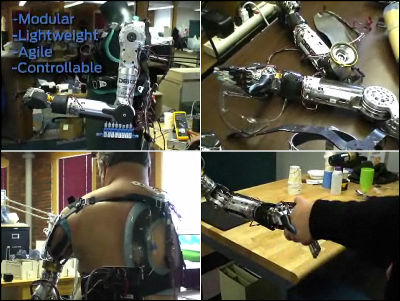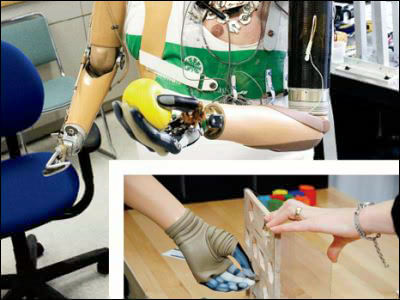A "prosthetic hand" that requires little learning is developed

In recent years, in art of artificial prostheses and artificial legsMachine learningIt became to be used, and it was able to perform smooth operation, but there was a drawback that learning takes time. Helen Hwan et al. 'S research team, who is a professor of medical bioengineering at the University of North Carolina at Chapel Hill, creates a generalized model of the electrical signals of the human nerve muscle, thus requiring little learning and smoothly I succeeded in developing an artificial arm that works joints such as wrists.
Myoelectric Control Based on A Generic Musculoskeletal Model: Towards A Multi-User Neural-Machine Interface - IEEE Journals & Magazine
https://ieeexplore.ieee.org/document/8360946/?reload=true
Smart Prosthetic Devices Create Natural Motion by Predicting Movement
https://futurism.com/prosthesis-hand-computer-model/
Even a person who has lost a part of his body such as an arm or a foot due to an accident or the like, the brain sends a signal of neuromuscular muscle commanding exercise to the missing part. Many technicians have developed artificial limbs and prosthetic limbs, taking this approach to learning accurate motion by using learning by machine learning, this signal was taken.
About this approach, Mr. Hwan said, "Neuromuscular signals change greatly only by changing their posture or sweating.Therefore, when learning prosthetic limbs using machine learning, posture and state It is necessary to change the same movement repeatedly and it will take time to learn. "It is pointed out that there are problems that conventional prosthetic limbs require long learning .

ByTechCrunch
The research team does not make individual prostheses learn individual signals one by one, but by having the prostheses learn the general model of the signal in advance, the person wearing the prosthesis will not be able to immediately move on the practical level I thought.
Therefore, the research team who gathered six subjects attached the myoelectric sensors that record muscle electrical activity on their arms and analyzed the signals when various movements were made. Based on the contents of these signals, Mr. Fan et al. Succeeded in constructing a general neuromuscular signal model.
In accordance with the signal actually input from the myoelectric sensor, how the prosthesis moves can be confirmed with the following movie.
Model-based control on DEKA hand (Courtesy of Neuromuscular Rehabilitation Engineering Lab) - YouTube
The research team had this prosthetic hand worn as a prosthesis for a subject who had no problems with limbs and a subject who cut a forearm in the past and both of them can perform all the expected actions in advance with only the necessary minimum training confirmed. According to Mr. Fan et al., "We plan to gather more subjects and move on to clinical trials in the future."
Related Posts:







